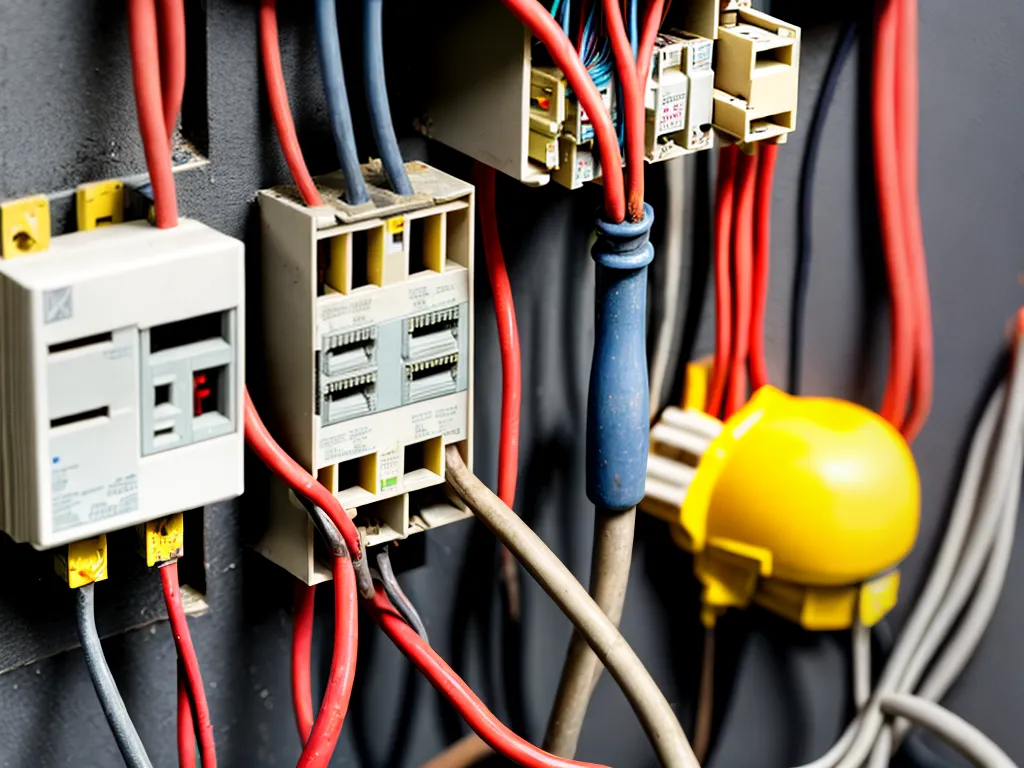
As an electrician working on older commercial buildings, I occasionally come across unusual or uncommon wiring faults that require some creative troubleshooting. With buildings that are decades old, non-standard practices and undocumented changes can lead to perplexing electrical issues. Here are some tips I've learned for tracking down uncommon electrical faults in vintage commercial spaces.
Understanding Common Electrical Systems in Older Buildings
To troubleshoot effectively, I need to understand the typical electrical systems found in older commercial buildings.
Knob and Tube Wiring
One obsolete wiring method is knob and tube wiring, which was phased out by the 1940s. This consists of insulated wires supported on ceramic knobs and threaded through porcelain tubes. Problems include loose connections, deterioration of insulation, and overloading of undersized wires. Checking for modifications, inadequate repairs, or damage during renovations is key with knob and tube systems.
Older Conduit and Armored Cable
Early electrical conduit and BX (armored) cable can also degrade over decades of use. Brittle or cracked insulation leads to short circuits and ground faults. Carefully examining the condition of older cabling helps me identify problems.
Obsolete Electrical Devices
Many older light switches, receptacles, breakers, and other devices are outdated and prone to failure. Faulty connections at devices are common. Upgrading to modern electrical hardware often solves issues.
Antiquated Wiring Practices
How wiring is routed and connected can lead to problems in older buildings. Outmoded techniques like "daisy-chaining" connections between fixtures or receptacles can overload circuits. Tracing circuits to understand the wiring layout is essential.
Diagnosing Uncommon Electrical Issues
With a handle on older electrical systems, I can better detect and diagnose uncommon faults.
Intermittent Problems
Intermittent power loss, flickering lights, or occasional sparks likely point to loose wiring connections. This can occur where conductors connect to devices or splice together. Clamping wires tightly or resoldering joints usually remedies these annoying issues.
Partial Outages
If part of a circuit loses power, I check for compromised insulation allowing wires to touch and short. Insulation damage is unfortunately common in older wires. Re-insulating or replacing wires solves these kinds of partial outages.
Ground Faults
Ground faults or repeated tripped GFCIs suggest compromised insulation to ground. Rodent damage or insulation breakdown are common culprits. Thoroughly inspecting wiring and enclosures helps me detect breaches.
Mislabeled Breakers/Fuses
When a circuit doesn't respond as expected, I verify the breaker/fuse controls the correct circuit. Incorrectly labeled panels or changed circuit configurations can cause confusion. Comparing connected equipment to distribution panels clarifies controls.
Crossed Neutral Wires
If seemingly unrelated circuits fail simultaneously, I look for accidentally crossed neutral wires. This can cause overload failures. Carefully tracing neutral connections highlights crossed neutrals.
Unsupported Wires
Loose, unsupported wires are a fire hazard and can short if touching other conductors. I watch for wires lacking proper connections to junction boxes, hanging loose from ceilings, or resting on suspended ceilings. Proper terminations and securing wires solves these issues.
Tips for Tracing Old Electrical Circuits
Chasing down faults in older electrical systems often requires some circuit sleuthing techniques.
-
Use circuit maps/diagrams if available, but verify accuracy on-site.
-
Label each conductor to understand connections.
-
Check suspected conductors with a multimeter to determine if energized.
-
Follow conduit runs visually to see if interrupted or damaged.
-
Shut off power selectively to see which devices are affected.
-
Check for extra wires not part of the expected circuit.
Replacing Deprecated Electrical Components
When I encounter obsolete or non-compliant electrical hardware, I recommend upgrades:
-
Switches and receptacles - Replace with modern, grounded, arc-fault and tamper resistant devices.
-
Breakers and fuses - Switch to properly rated HACR breakers with AFCI/GFCI protection.
-
Wiring - Remove degraded wiring like knob and tube and replace with new NM cable or conduit.
-
Lighting/equipment - Update to modern, efficient devices and safety disconnect switches.
Though costlier upfront, upgrades improve safety, efficiency, and reliability. I provide estimates to building owners to help them budget appropriately.
Leveraging Resources for Troubleshooting Old Electrical Systems
For difficult electrical gremlins, I leverage additional resources:
-
Inspecting: Thermal cameras, continuity testers, and endoscopes help thoroughly inspect hidden wiring.
-
Documenting: Creating detailed circuit maps helps decipher complex wiring schemes.
-
Researching: Reviewing electrical codes, manufacturer specs, and guides provides troubleshooting insights.
-
Consulting: Discussing challenges with experienced master electricians taps their knowledge.
Maintaining Safe Practices
When dealing with antique electrical systems, I take extra precautions:
-
Use PPE like insulating gloves and mats when accessing risky wiring.
-
Carefully check wires before handling to avoid contact with live conductors.
-
Keep fire extinguishers and first aid kits handy in case of accidents.
-
Have colleagues available to assist since electrical work can be hazardous.
-
Advise building management of unsafe conditions requiring immediate correction.
Key Takeaways
The main challenges in troubleshooting older commercial building wiring arise from antiquated construction techniques, undocumented modifications, and component degradation over time. By understanding common electrical systems of the era, diagnosing unusual faults, safely accessing risky wiring, methodically tracing circuits, and replacing obsolete hardware, I can conquer most electrical gremlins that arise in these vintage structures. With diligence and know-how, I can keep the lights on and power flowing in even the most stubborn old electrical systems.